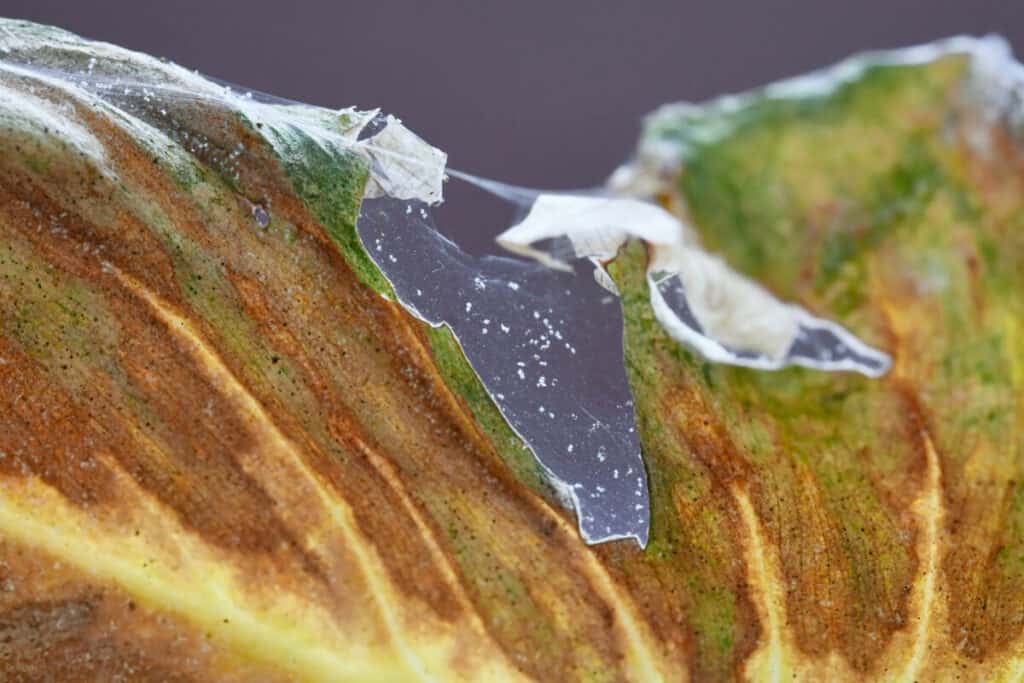It’s a familiar problem for many vegetable gardeners – spider mites. These tiny pests can wreak havoc on your plants, leaving them yellow and covered in webbing.
Let’s discuss spider mites, their attraction towards vegetable plants, and how to remove them to keep your veggies healthy.
What are spider mites?
Spider mites are tiny, eight-legged arachnids that feed on plant sap. They measure about 1/50 of an inch and have a wide variety of colors ranging from yellow, green, to red.
The mites can spin fine webs which appear as a silvery sheen on the leaves of plants. They reproduce quickly and spread easily, making them difficult to control.
What damage do spider mites cause on plants?
Spider mites cause severe damage to plants by sucking out their sap, leading to yellowing and wilting of leaves.
Their webs can block the sunlight from reaching the plant, preventing photosynthesis, which is essential for healthy growth.
In large infestations, spider mites can completely defoliate a plant, leaving it vulnerable to other pests and diseases.
How to identify spider mites on plants

Spider mites are usually difficult to spot with the naked eye, as they measure only 1/50 of an inch. However, one can recognize their presence by the webbing they leave behind on plant leaves and stems.
These webs may appear as a fine silver sheen, or sometimes look like tiny white specks. You may also notice yellow spots on the undersides of your leaves, which shows that spider mites have been feeding there.
Read more:
How to get rid of spider mites
Introduce predatory mites or insects such as ladybugs or lacewings to your garden, as they feed on spider mites.
Spray the affected plants with a strong jet of water from the garden hose to remove mites from the leaves and stems.
Mix neem oil and insecticidal soap into a spray bottle and apply it directly onto the plant leaves for an effective organic spider mite control solution.
Use an insecticide labeled specifically for spider mites, such as pyrethrin or horticultural oils, and follow directions carefully when applying these products to your plants.
Use diatomaceous earth as a natural alternative to insecticides; this fine powder is made from fossils and kills mites by absorbing water from their bodies.
Read more:
- How To Stop Insects Eating Plant Leaves
- How to Use Neem Oil and Save Your Plants
- How To Use Diatomaceous Earth In Potted Plants
- Insecticidal Soap vs Dish Soap for Pest Control
How to prevent spider mites on plants
Monitor for signs of infestation regularly and take action as soon as you notice any tell-tale signs of spider mites, such as webbing or discolored leaves.
Introduce beneficial insects that eat spider mites, such as ladybugs, lacewings, and parasitic wasps into the garden to keep their population at bay naturally.
Plant insect-repelling plants such as marigolds or chrysanthemums around your vegetable patch to keep away pests naturally.
Apply a horticultural oil spray or insecticidal soap to your plants every two weeks during peak activity periods
Host vegetable plants for spider mites
Some of the most common vegetables attacked by spider mites include tomatoes, peppers, beans, squash, and cucumbers.
Natural predators of spider mites
Ladybugs and lacewings are both beneficial insects that feed on spider mites. Other predators include predatory mites and certain species of beetles.
References
- https://en.wikipedia.org/wiki/Spider_mite
- https://ohioline.osu.edu/factsheet/HYG-2012-11
- https://ipm.ucanr.edu/PMG/PESTNOTES/pn7405.html

Fact Checked, Written, and Published by Kevin Rodrigues
Kevin is the founder of Gardening Mentor, a website that aims to teach people to grow their own food in a limited space. As a self-taught gardener, Kevin has spent several years growing plants and creating gardening content on the website. He is certified in Home Horticulture and Organic Gardening from Oregon State University. He has a Post Graduate Diploma in Horticulture and Landscape Gardening from Mumbai University.
Read more
